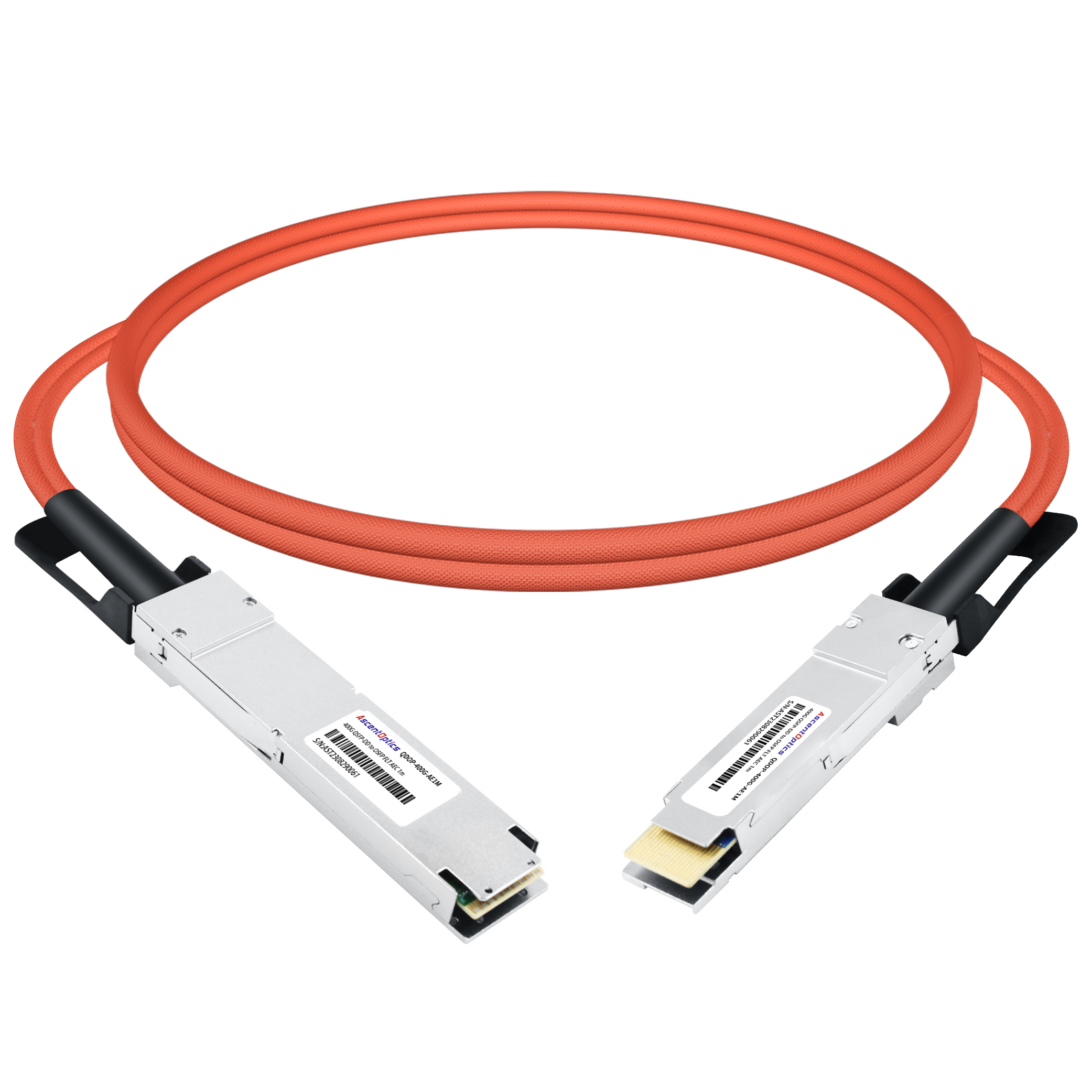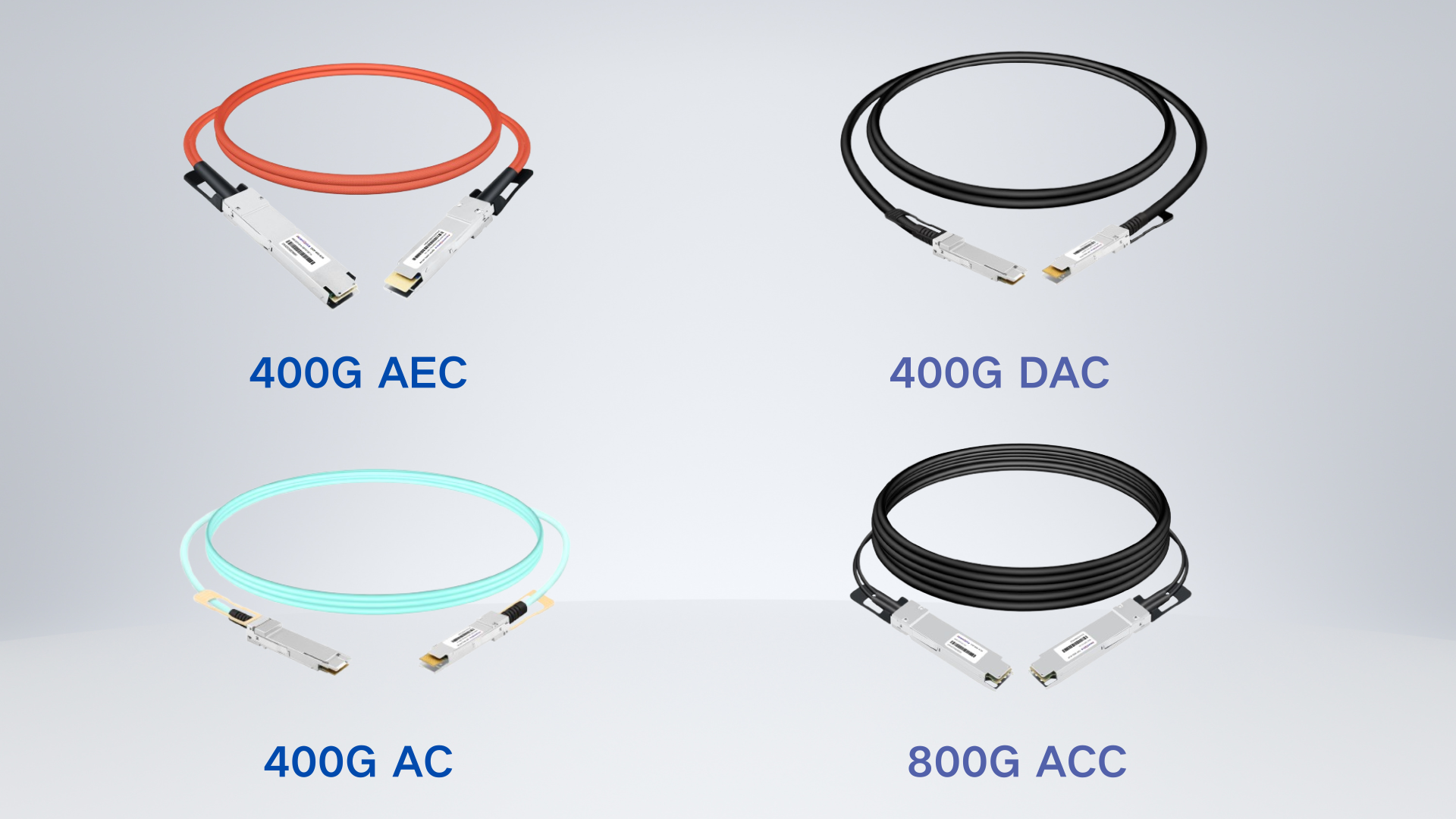Active Electrical Cables (AECs) are advanced copper-based interconnect solutions designed to enable high-speed data transmission in modern network environments. Unlike passive copper cables, AECs incorporate active electronic components—such as retimers and equalizers—to enhance signal integrity over longer distances. These cables are widely used in data centers, telecommunications, and high-performance computing systems, serving as critical components for high-bandwidth connectivity.
With the rapid growth of cloud computing, artificial intelligence (AI), and big data analytics, there is an explosive demand for reliable, high-speed interconnections in data centers. AECs offer a cost-effective, energy-efficient solution for short- to medium-distance links, balancing performance, cost, and compatibility. Their ability to maintain signal quality at high data rates makes them indispensable in next-generation network architectures.

AECs use built-in active components to condition and boost electrical signals, effectively compensating for signal loss over longer transmission distances. Specifically, the integration of retimers and equalizers ensures stable data transmission even at 800G or 1.6T speeds. This signal processing capability overcomes the limitations of traditional copper cables in terms of attenuation and crosstalk.
Signal Reconstruction: Retimer chips (with Clock Data Recovery, or CDR) embedded at both ends of the cable retime, equalize, and drive the signal, eliminating noise and jitter while improving signal integrity.
Advanced Compensation: Algorithms such as Feed-Forward Equalization (FFE) and Decision Feedback Equalization (DFE), often implemented via Broadcom DSP chips, significantly enhance Signal-to-Noise Ratio (SNR) and eye diagram quality.
The key active components in AECs include:
Retimer: Reconstructs and retimes signals to remove jitter and preserve signal integrity.
Equalizer: Compensates for high-frequency signal losses to restore signal quality.
Amplifier: Boosts signal strength to support longer transmission distances.
These components collaboratively ensure stable and reliable performance even in demanding environments.
AECs come in various form factors, such as QSFP-DD (Quad Small Form-factor Pluggable Double Density) and OSFP (Octal Small Form-factor Pluggable), meeting the needs of modern networking equipment. AECs also support industry standards like the Common Management Interface Specification (CMIS), enabling seamless integration and unified management.
AscentOptics provides 400G AECs for high-speed transmission—detailed below.
In high-speed interconnect applications such as data centers and high-performance computing environments, Active Electrical Cables offer a compelling balance between performance, power efficiency, and cost. Positioned between passive copper cables and active optical solutions, AECs integrate active signal conditioning components to overcome the limitations of traditional copper links.

Compared to Direct Attach Copper (DAC) cables, AECs provide significant advantages in signal integrity and reach. DACs are passive cables ideal for short-distance, cost-sensitive connections, typically within 1 to 3 meters. However, they suffer from signal degradation at higher speeds and over longer distances.
AECs, on the other hand, incorporate components such as retimers and equalizers that compensate for signal loss and jitter, enabling reliable performance up to 7 meters even at speeds of 400G or 800G. This makes AECs more suitable for high-density deployments in modern data centers.
Relative to Active Optical Cables (AOC), AECs offer a more cost-effective and power-efficient solution for medium-reach connections. AOCs utilize optical fibers and require optical-electrical conversion at both ends, which provides excellent signal fidelity and long-distance reach, but at the cost of higher power consumption and complexity.
In contrast, AECs transmit signals entirely over copper with embedded electronics, offering lower latency, reduced power consumption, and simpler deployment for intra-rack and inter-rack connectivity within data centers.
When compared to Active Copper Cables (ACC), AECs demonstrate more advanced signal processing capabilities. ACCs generally use simple linear drivers or amplifiers to boost the signal, making them adequate for moderate-speed, short-to-medium-range applications.
AECs go a step further by embedding high-performance digital signal processing (DSP) chips, enabling sophisticated equalization techniques and clock-data recovery (CDR), which are essential for maintaining signal integrity in next-generation high-speed networks.
In summary, AECs strike a well-rounded compromise among performance, reach, power, and cost. They are particularly well-suited for medium-distance, high-speed, and low-latency interconnects, playing a critical role in the evolution of next-generation data center and networking architectures.
In today’s rapidly evolving high-performance networking landscape, AECs have emerged as a key solution for efficient interconnects thanks to their unique design and technical strengths. The following highlights the main advantages of AECs in real-world deployments.
Superior Signal Integrity and Reliability: AECs are equipped with active components such as retimers and equalizers that restore and enhance electrical signals. These components eliminate jitter, crosstalk, and noise, ensuring clean signal transmission even at high data rates like 400G and 800G. This makes AECs ideal for stable, high-performance networking.
Extended Copper Transmission Distance: Compared to DACs, which are typically limited to 1–3 meters, AECs support cable lengths up to 7 meters, enabling reliable connections across racks or within dense data center layouts—without sacrificing performance.
Cost-Effective High-Speed Connectivity: AECs deliver a better price-to-performance ratio. They are less expensive than AOCs and more capable than DACs, offering a smart investment for large-scale deployment in bandwidth-demanding environments.
Flexible Deployment and Cable Management: AECs are lighter and more flexible than passive DACs and more robust than delicate fiber optics used in AOCs. This makes them easier to install and manage in high-density or complex cabling environments.
Low Latency for Time-Sensitive Applications: Because AECs transmit purely electrical signals without optical-to-electrical conversion, they deliver lower latency than AOCs. This makes them well-suited for latency-sensitive applications like AI training, real-time analytics, and high-frequency trading.
High Data Rate Support and Future-Readiness: AECs support a wide range of data rates, including 100G, 200G, 400G, and 800G, with the scalability to handle future 1.6T interconnect requirements. This ensures long-term viability for next-generation data centers.
In summary, AECs strike a strong balance between performance, cost, and deployment flexibility.
Data Center Interconnects: Widely used in top-of-rack (ToR) and middle-of-rack (MoR) connections to enable high-speed, low-latency communication between servers, switches, and storage devices.
High-Performance Computing and AI Networks: Meets stringent bandwidth and latency requirements for compute-intensive tasks like machine learning training and inference.
Telecom and Disaggregated Distributed Chassis (DDC): Delivers high-reliability connectivity in telecom networks and DDC architectures.
These applications demonstrate the wide reach of AECs—from data centers to HPC environments.

Data Rates Supported: 100G, 400G, 800G, with future support up to 1.6T to meet evolving network needs.
Transmission Distance: Up to 7 meters, suitable for most intra- and inter-rack connections.
Power Consumption: More energy-efficient than AOCs; for example, 400G applications require just 1–2W per port, supporting green data center initiatives.
These metrics show that AECs have made significant strides in balancing high speed and low power.
Role of the HiWire Alliance: Comprising industry-leading companies, the HiWire Alliance promotes the development and standardization of AEC technologies, ensuring interoperability and compatibility across vendors.
Standards Compliance: Compatible with MSA standards like QSFP-DD and OSFP, and supports CMIS protocol for configuration and monitoring.
Industry collaboration lays the technical foundation for widespread AEC adoption.
Compared to DAC and AOC: Despite its strengths, AECs cannot match AOC in distance and have higher power consumption than passive DACs.
High-Density Deployment Concerns: In ultra-dense environments, thermal management and cable routing can pose challenges, requiring thoughtful layout and cooling solutions.
Nevertheless, AECs offer irreplaceable advantages in short- and medium-distance applications.
Role in 400G/800G Networks: As Ethernet evolves toward 400G and 800G, AECs are poised to become a key interconnect technology, offering high performance and cost-efficiency.
Next-generation Data Centers: With the rise of AI, cloud computing, and edge computing, AECs are expected to form the foundational interconnect of modern data centers, balancing scalability with affordability.
Looking ahead, AECs will continue to drive the advancement of high-speed interconnect technology, powering the evolution of data center and network infrastructures.
A: AECs offer enhanced signal integrity, longer reach (up to 7 meters), and cost-effectiveness compared to DACs and AOCs, making them ideal for short-to-medium-range, high-speed applications.
A: AECs use active components like retimers and equalizers to compensate for signal degradation, ensuring reliable performance at high data rates.
A: Yes, AECs adhere to industry standards like QSFP-DD, OSFP, and CMIS, ensuring compatibility with modern networking hardware.
A: AECs can support transmission distances up to 7 meters, suitable for most intra-rack and inter-rack connections.
A: AECs consume less power than AOCs, typically 1-2 watts per port for 400G applications, reducing energy costs and environmental impact.